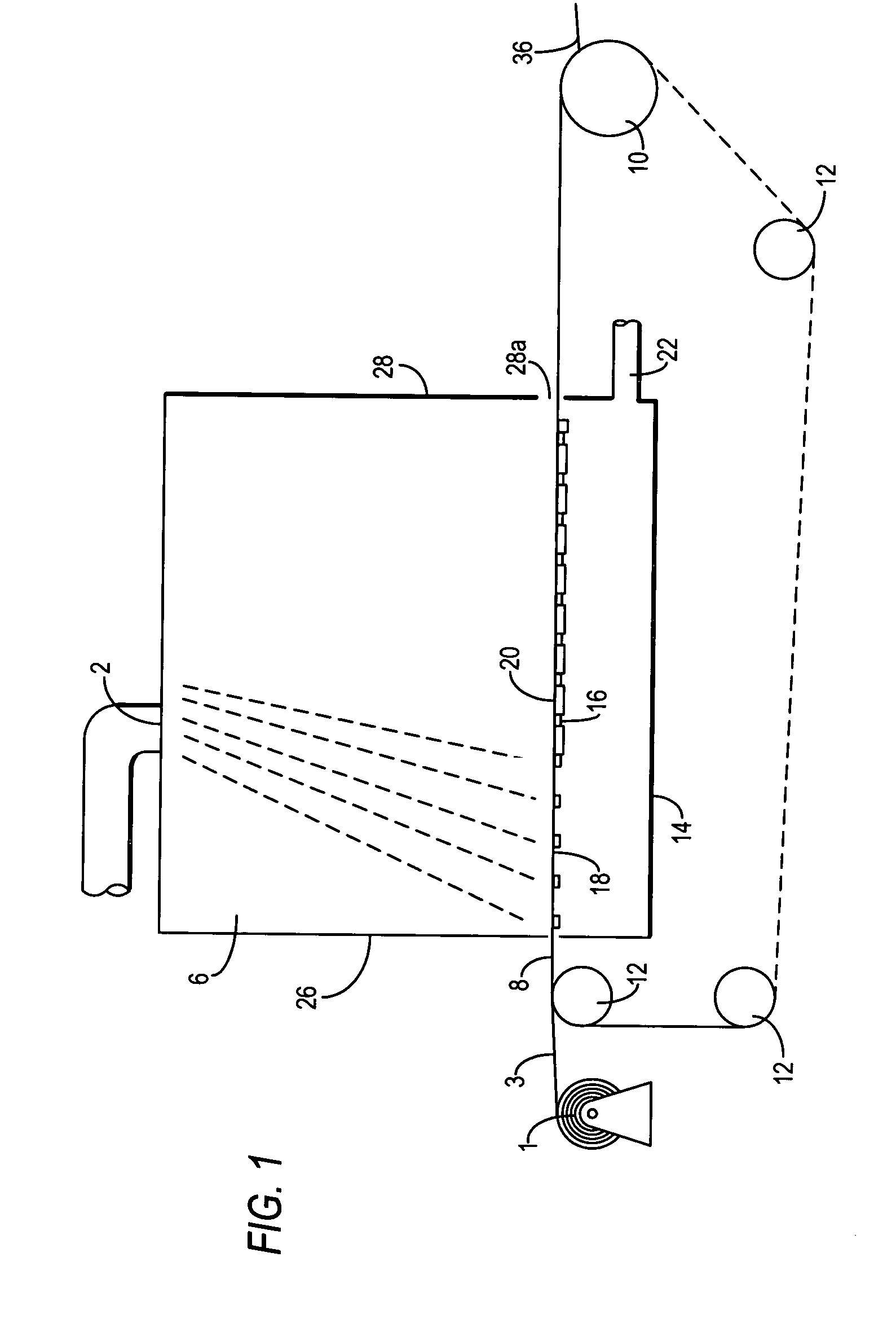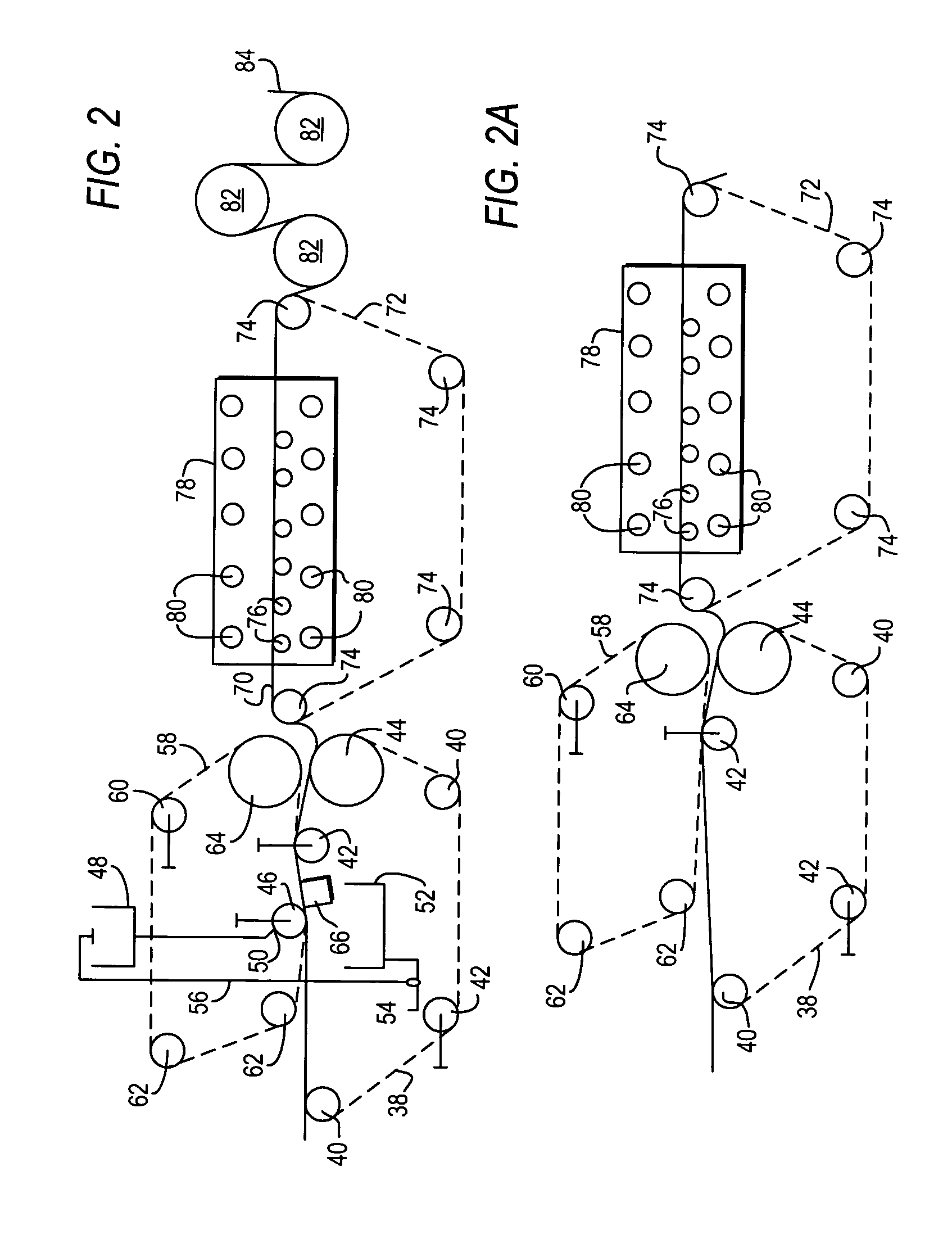Woven materials with incorporated solids and processes for the production thereof
a technology of solids and woven materials, applied in the field of woven materials and knit materials, can solve the problems of less comfort than woven materials, non-woven materials typically lack the stretchability and breathability of woven materials, and limited use of non-woven materials in clothing, and achieve the effect of high air and moisture permeability
- Summary
- Abstract
- Description
- Claims
- Application Information
AI Technical Summary
Benefits of technology
Problems solved by technology
Method used
Image
Examples
example 1
[0088]This example was performed using the apparatus illustrated in FIGS. 2–4 above. The woven base material, a blend of 59% cotton, 39% polyester and 2% lycra, was supported on the wire mesh conveyor belt 8 as it traveled through the incorporation zone located between the incorporation zone 6 and the suction box 14. To start up the process, the woven base material was placed on the wire mesh 8 in the material's relaxed state, i.e., no feed fingers or pins were used to stretch the material. The woven base material was then hand threaded into the inlet of the incorporation zone.
[0089]Once in the incorporation zone, the woven base material was held in place by suction from the suction box 14. The woven base material exiting the incorporation zone was then threaded between the wire mesh conveyor belts 38, 58, pulling the material through the binder zone. Rope was then tied to the end of the woven base material and hand threaded through the oven 78 and the steam cans 82. The rope was at...
example 2
[0095]The procedure described in Example 1 was repeated, but the targeted carbon incorporation was 70 g / m2. Details of the concentration of binder used, the carbon loading achieved, and other measured process parameters are provided in Table 1, below.
example 3
[0096]The procedure described in Example 1 was repeated using a blend of 96% cotton and 4% lycra as the woven base material with a low targeted carbon incorporation of 8 g / m2. Details of the concentration of binder used, the carbon loading achieved, and other measured process parameters are provided in Table 1, below.
PUM
| Property | Measurement | Unit |
|---|---|---|
| thickness | aaaaa | aaaaa |
| thickness | aaaaa | aaaaa |
| thickness | aaaaa | aaaaa |
Abstract
Description
Claims
Application Information
 Login to View More
Login to View More - R&D
- Intellectual Property
- Life Sciences
- Materials
- Tech Scout
- Unparalleled Data Quality
- Higher Quality Content
- 60% Fewer Hallucinations
Browse by: Latest US Patents, China's latest patents, Technical Efficacy Thesaurus, Application Domain, Technology Topic, Popular Technical Reports.
© 2025 PatSnap. All rights reserved.Legal|Privacy policy|Modern Slavery Act Transparency Statement|Sitemap|About US| Contact US: help@patsnap.com



